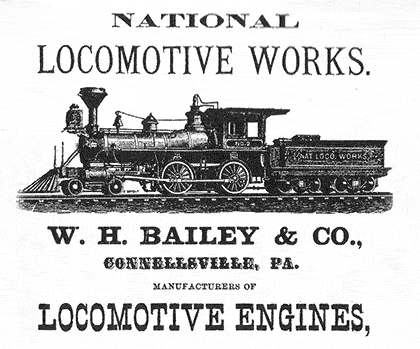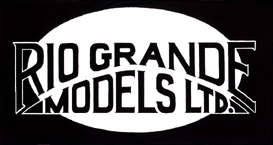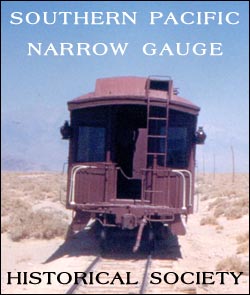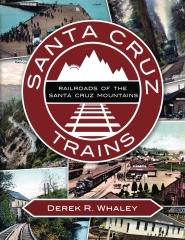

National Locomotive Works.
By David Fletcher.
One of the lesser known narrow gauge locomotive builders of the 1870s is that of the firm of National Locomotive Works, of Connellsville Pennsylvania.
John Y Smith, founder of National was not new to locomotive design and construction having co-founded the firm of Smith & Porter in 1866
(precursor of the famous HK Porter & Co.). In April 1871 after withdrawing from Smith & Porter he began locomotive construction at his new firm, John Y Smith & Co.
 In 1872 John Smith formed a new alliance with George Dawson and the firm reorganised as 'Smith & Dawson'.
The partnership was short lived when Smith redrew from the firm a year later, forcing Dawson to seek additional partners with finance.
The reorganisation brought William Bailey (sometimes spelt Baily) into partnership to form the new firm of 'Dawson & Bailey'.
D&B was founded with a view to entering into the lucrative narrow gauge market, in competition with Porter Bell & Co and the Baldwin Locomotive Works, who had entered the narrow gauge market in 1871. Where Porter built narrow gauge locomotives for industrial as well as mainline purposes,
D&B focused on the growing narrow gauge boom associated with mainline narrow gauge development. Through the 1870s, the firm of D&B became known as the 'National Locomotive Works' or 'National Locomotive & Machine Works'.
In 1872 John Smith formed a new alliance with George Dawson and the firm reorganised as 'Smith & Dawson'.
The partnership was short lived when Smith redrew from the firm a year later, forcing Dawson to seek additional partners with finance.
The reorganisation brought William Bailey (sometimes spelt Baily) into partnership to form the new firm of 'Dawson & Bailey'.
D&B was founded with a view to entering into the lucrative narrow gauge market, in competition with Porter Bell & Co and the Baldwin Locomotive Works, who had entered the narrow gauge market in 1871. Where Porter built narrow gauge locomotives for industrial as well as mainline purposes,
D&B focused on the growing narrow gauge boom associated with mainline narrow gauge development. Through the 1870s, the firm of D&B became known as the 'National Locomotive Works' or 'National Locomotive & Machine Works'.
The latter title appropriate since D&B did take up contracts for stationary engines and agricultural equipment.
National locomotives were generally small machines, of size consistent with the work of Porter, but with a level of finish and elegance in keeping with the better known and established firms on the east coast. Through the 1870s the small firm out-shopped some 20-30 locomotives per year, and saw little slow down during the panic years of 1873/74. It is said during the slowest years of 1875, 76 and 77, National turned out more narrow gauge locomotives than Rogers, Grant and Danforth Combined. In 1875, Dawson left the firm amidst financial troubles, when the firm's major financial supporter fell on hard times. Bailey reorganised the firm as "W.H. Bailey & Co", and maintained business under the National Locomotive Works banner. The good years however were not to return; narrow gauge markets began to slow and the financial stability of the firm was never again secure. The firm ultimately failed in May 1878.
 |
| A view of the National Locomotive Works in 1876. After building the railroad engines in the building, they would then float the engines on a barge across the river and with cribben blocks would raise them up to the level of the B & O tracks. If it was a standard guage engine they would just place it on the rails. But if it was a narrow guage engine, they would have to place it on a flat car for delivery. |
Over the 7 years of locomotive construction, the firm outshopped some 180 locomotives, although the exact number is unknown due to the construction numbers not reflecting the actual number built. Additionally, some stationary plant was also counted within the group. One claim is that the first D&B locomotive may have had construction number of 101, reflecting the 100 locomotive experience Smith had brought to the firm from Porter, and just continued with engine 101. Or maybe the initial construction number of 101 reflected the difficulty in beginning a locomotive works during boom times with stiff competition. After all, who would buy engine #1 from a new firm? Regardless, is it said that the earliest confirmed construction number was #153 of 1872.
The most famous of the National locomotives were the group sent to the Colorado Roads: The Denver, South Park & Pacific RR began operation with two National locomotives, the tiny 2-6-0 'Fairplay' of March 1874 (DSP&P #1), and the larger 4-4-0 'Platte Canyon' of Nov 1874 (DSP&P #2). Additionally the neighbouring road, the 'Colorado Central Railroad' acquired one National 0-6-0 of April 1874, later converted in a 2-6-0. In 1879 the DSP&P RR bought 3 additional National Moguls from the Cairo & St Louis RR. All three had been built in Feb 1975.
National locomotive Works produced a wide variety of handsome small narrow gauge locomotives with a family appearance. Cab windows were always slightly arched and pointed at top, peaked roofs, wagontop boilers and small tenders of often 4-wheel and 6-wheel design. The tender collars often sloped downward toward the front. The locomotives were ornately decorated with gilded scrollwork and seemingly several deep colours were used on the tender sides, in keeping with late 1860s and early 1870s locomotive design trends. The actual colours used by National are not yet known, however Historian Jim Wilke notes - "Fairplay was reported in a Denver newspaper described as having a varnished ash cab, with black walnut moldings, and a tender painted with colors that harmonized with the cab. Claret and buff, or similar colors were recommended in painting guides for machinery at the time."
The final two locomotives out-shopped from the National Locomotive Works in 1878 at the time of bankruptcy were two very small and ornate 2-4-0s built for the 'Dayton, Sheridan & Grand Ronde RR' of Oregon, as their first engines, #1 and #2. The two engines were called 'Pioneer' and 'Progress' respectively, construction numbers #259 and #260.
'North American Steam Locomotive Builders & Their Insignia'. Harold Davies, 2005.
Notes from John A. Rehor 1967.
'The South Park Line: Colorado Rail Annual No. 12', Chappell, Richardson & Hauck, Colorado Railroad Museum, 1974.
'Narrow Gauge to Central and Silver Plume: Colorado Rail Annual No. 10, Cornelius W. Hauck, Colorado Railroad Museum, 1974.
Additional Research Notes.
Editorial Assistance and Contributions by: Andrew Brandon, Randy Hees, Craig Hoefer, Kyle Wyatt
Firm Details:
John Y Smith & Co. (1871 - 1872).
Smith & Dawson (1872 - 1873).
Dawson & Bailey (1873 - 1875).
W.H. Bailey & Co (1875 - 1878).
Reference Material Available Online:
National Locomotive Works Photographs.
Images tagged: National Locomotive Works in our gallery.




